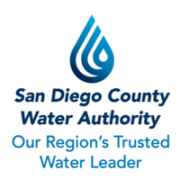Aug. 6, 2021 – San Diego County Water Authority General Manager Sandra L. Kerl today issued a statement in response to deteriorating water supplies across the West, highlighted by state officials taking the powerplant offline at Lake Oroville due to low reservoir levels and regulators restricting farmers’ access to Central Valley rivers.
“These developments are sobering reminders of the serious conditions facing residents, farms and businesses across the West. In support of regions where water supplies are severely strained, I urge San Diegans to do their part by voluntarily reducing use of our most precious natural resource by 15%, as called for by the governor.
“We have collectively done a great job developing new water supplies and reducing water use across the county – and we should remain vigilant in our efficient use of water. Some examples of actions people are taking to do their part include fixing leaks in irrigation systems and plumbing fixtures; irrigating in the morning or evening when temperatures and winds abate; washing only full loads of laundry and dishes; patronizing car washes that recycle water; using hoses with automatic shut-off valves; and using pool covers and garden mulch to reduce evaporation. Water-use efficiency information and incentives are at www.watersmartsd.org.
“By doing our part to stay WaterSmart, we will help California weather this extremely dry year and prepare for the uncertainties of the future.”
— Sandra L. Kerl, General Manager, San Diego County Water Authority



